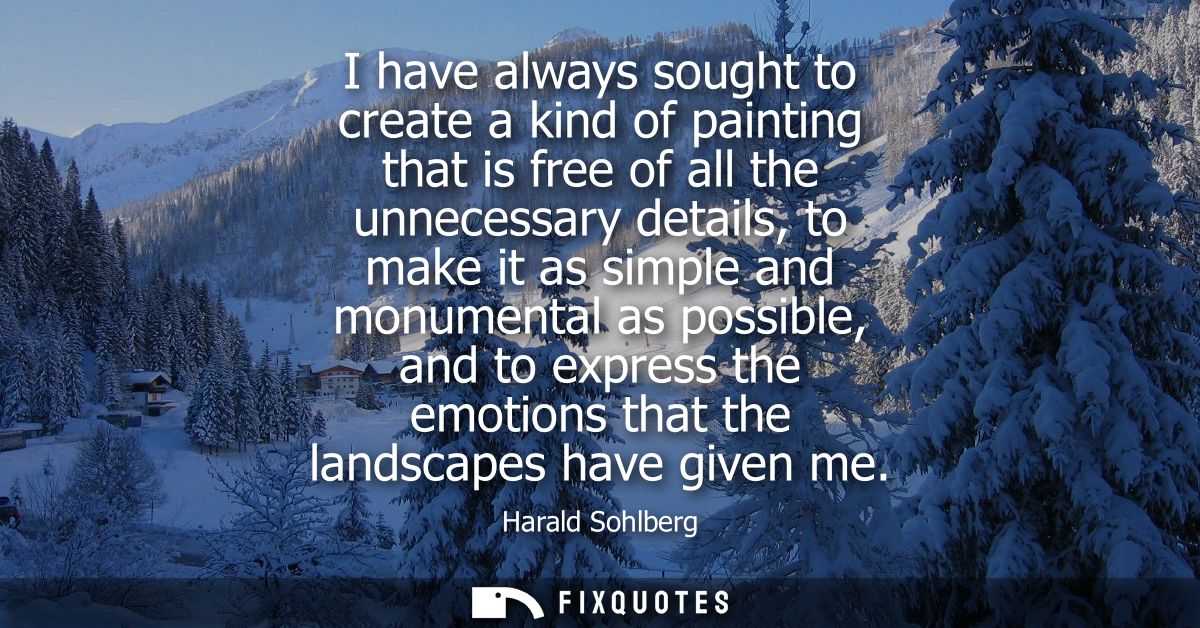"I have always sought to create a kind of painting that is free of all the unnecessary details, to make it as simple and monumental as possible, and to express the emotions that the landscapes have given me"
About this Quote
Harald Sohlberg describes an artistic ethic of reduction, clarity, and emotional fidelity. To be “free of all the unnecessary details” is not an indifference to the world but a devotion to its essence: the painter trims away anecdote, ornament, and distraction so that form, color, and atmosphere can carry honest feeling. The landscape is not reproduced as a catalog of features; it is distilled into a structure of presence. Out of that discipline emerges monumentality, a paradoxical grandeur born from restraint. When impurities fall away, the remaining shapes, mountain, sky, snow, water, stand like elements of a visual creed.
Simplicity here serves as a conduit for intensity. By stripping detail, Sohlberg sharpens the viewer’s attention to light gradients, the hush between contours, the pause in a horizon’s line. Monumentality follows because what is left becomes more weighty, more inevitable. The scene reads as a single, resonant statement rather than a chain of small observations. Such concentration asks for a slower kind of looking, a contemplation in which the eye rehearses the painter’s choices and the mind senses the pressure of silence.
The aim is not topographical accuracy but the transmission of what the landscape gives, weathered awe, chill clarity, the long breath of winter dusk, the quiver of blue in snow-shadow. Feeling arrives through structure: crisp edges, carefully balanced masses, deliberate intervals of emptiness that function like rests in music. Color is not descriptive but expressive; it calibrates mood, not merely material.
There is also a moral undertone to the craft. Editing becomes an act of respect: the subject is granted space to speak without the noise of embellishment. In that space, nature tilts toward the symbolic and the timeless. Mountains seem to hold themselves like thoughts; trees become marks of patience; a road becomes a promise. The painting turns into a vessel where memory and perception meet, and where the simplest forms can bear the greatest weight of feeling.
More details
About the Author

